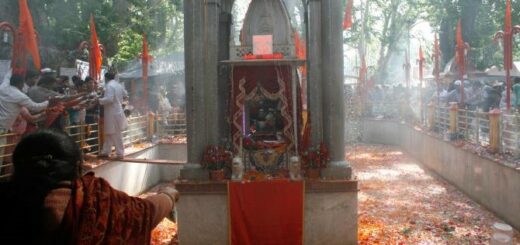National Current Affairs – UPSC/IAS Exams- 24th September 2019
Climate Action Summit
Topic: Environment and Ecology
In News: At the 74th session of the United Nations (UN) General Assembly, the Prime Minister of India addressed the United Nations (UN) Climate Action Summit as well as the Universal Health Coverage meeting, held in New York on 23rd September, 2019.
More on the Topic:
- UN secretary general António Guterres is hosting a climate summit in New York on 23 September to ramp up global efforts to tackle the climate crisis.
- The high-level meeting at the UN headquarters is a critical moment for political leaders to show their willingness to increase their climate plans and deepen the decarbonisation of their economies.
Takeaways from the summit:
- New Leadership Group for Industry Transition: India and Sweden together with Argentina, Finland, France, Germany, Ireland, Luxembourg, the Netherlands, South Korea and the UK, as well as a group of companies announced a new Leadership Group for Industry Transition. This Leadership Group will drive transformation in hard-to-decarbonize and energy-intensive sectors. This global initiative will ensure heavy industries and mobility companies can find a workable pathway to deliver on the Paris Agreement.
- Coalition for Disaster Resilient Infrastructure (CDRI): An international partnership that will support countries- developed and developing- to build climate and disaster resilient infrastructure.The Coalition’s secretariat, based in Delhi, will facilitate knowledge exchange, provide technical support and support capacity building.
- The Government of India, the United Nations Office for Disaster Risk Reduction (UNDRR) and partners have together worked on the CDRI initiative in response to the Prime Minister of India’s call for action to reduce damage to critical infrastructure at the Asian Ministerial Conference on Disaster Risk Reduction in 2016.
High-Level Meeting on Universal Health Coverage:
- PM outlined the four main pillars of healthcare that India focuses on in his address to the summit.
- Preventive Healthcare: India has laid special emphasis on yoga, ayurveda and fitness which has helped in controlling lifestyle diseases such as diabetes, blood pressure and depression.
- Fit India Movement has been launched recently.
- The Clean India Campaign has contributed towards saving millions of lives.
- Immunization: Apart from introducing new vaccines, the government has improved access to vaccination in far flung areas.
- Affordable Healthcare: For this the government has rolled out the world’s largest health insurance scheme : Ayushman Bharat. Under this scheme, 500 million poor people have been given the facility of free treatment worth up to Rs. 500,000 every year. In 2018, 4.5 million people availed of this facility.
- India has opened more than 5000 special pharmacies where more than 800 varieties of vital medicines are available at affordable prices.
- The cost of stents for heart patients has been slashed by 80% and the cost of knee implants has been cut down by 50 – 70%.
- Kidney patients in India are also taking advantage of the free dialysis services provided by the government
- India has also helped in providing access to affordable healthcare by way of telemedicine to several other countries, especially African countries.
Source: PIB and AIR
Special Expenditure Observers
Topic: Governance
In News: The Election Commission of India (ECI) has appointed two Special Expenditure Observers for the forthcoming elections to the Legislative Assembly of Maharashtra.
More on the Topic:
- The Special Expenditure Observers are appointed in the exercise of the powers conferred on ECI under Article 324 of the Constitution and the Representation of the People Act, 1951.
- The Functions of the Special Expenditure Observers include:
- To watch the conduct of Elections with special emphasis on controlling the abuse of money power, in consultation with the Chief Electoral Officer at respective constituencies.
- To supervise and to monitor the work being done by the electoral machinery
- To ensure stringent and effective enforcement action is undertaken based on intelligence inputs and complaints received through C-VIGIL and Voter Helpline.
Source: PIB
AISHE report
Topic: Reports and Indices
In News: HRD ministry released All India Survey on Higher Education (AISHE) for 2018-19 recently.
More on the Topic:
- The survey, undertaken as an annual, web-based, pan-India exercise on the status of Higher Education since 2010-11, covers all the Higher Educational Institutions in the country.
- The survey collects data on several parameters like teachers, student enrolment, programmes, examination results, education finance, infrastructure, etc.
- The Survey found out that the gender gap is narrowing in terms of enrolment ratio. Female enrolment improved from 47.6% in 2017-18 to 48.6% in 2018-19. In Uttar Pradesh and Karnataka, there are now more females in the age group of 18-23 enrolling for higher education than male students.
- There was a marginal increase in the gross enrolment ratio as well. It increased from 25.8 in 2017-18 to 26.3 in 2018-19. GER for SCs has also shown a growth from 21.8 to 23.0 and STs from 15.9 to 17.2.
- Number of universities has grown from 903 in 2017-18 to 993 in 2018-19 and total HEIs (higher educational institutions) from 49,964 to 51,649 in the same period. Number of faculty has also increased from 13.88 lakh to 14.16 lakh.
- The data on preferred choice of students on different streams showed that 9% of the total enrolment was in arts/ humanities/social science, just 16.5% students are pursuing science, followed by commerce with 14.1%. Engineering.
- Data on Foreign national students shows that India gets the maximum number of foreign students from Nepal, followed by Afghanistan. Karnataka is said to be the most favourite state for foreigners to pursue higher education in India.
- Highest share of foreign students come from neighbouring countries of which Nepal is 26.88 pc of the total, followed by Afghanistan (9.8 pc), Bangladesh (4.38 pc), Sudan (4.02 pc), Bhutan constitutes (3.82 pc) and Nigeria (3.4 pc).
- The percentage of foreign students from United States of America (USA) is 3.2 per cent, Yemen (3.2 per cent), Sri Lanka (2.64 per cent) and Iran (2.38 per cent).
Source: The Hindu
Nonylphenol
Topic: Health
In News: In a study conducted by New Delhi-based NGO, twelve detergent samples were analysed. All of the analysed samples detected Nonylphenol, a harmful chemical which is banned in several countries or is being phased out owing to its harmful effects on humans and aquatic organisms.
More on the Topic:
- NP is a persistent, toxic, bio-accumulative chemical.It acts as a hormone disruptor and can be responsible for a number of human health effects.
- Its exposure through water, soil and food crops may result in a burning sensation, cough, laboured breathing, sore throat, unconsciousness, skin irritation and burns.
- Upon ingestion, it may cause abdominal pain, diarrhoea, nausea and sore throat. It is also toxic for aquatic animals.
- The Bureau of Industry Standards (BIS) has set the standard of phenolic compounds for drinking water (0.001 mg/L) and surface water (5.0 mg/L). However, unlike other countries, India does not have specific standards for Nonylphenol in drinking water and surface water.
Source: Down To Earth
Shodh Shuddh
Topic: Government Policies
In News: The union Ministry of HRD launched Plagiarism Detention Software (PDS).
More on the Topic:
- This service is being implemented by Information and Library Network (INFLIBNET), an Inter University Centre (IUC) of UGC.
- It will significantly help to improve the quality of research outcome by ensuring the originality of ideas and publication of the research scholars.
Source:PIB
The Hindi Debate
Topic: Culture/Polity and Governance
In News: Union Home Minister Amit Shah’s assertion that Hindi, as the most spoken language, could work to unite the country continued to draw sharp reaction from the Opposition parties.
More on the Topic:
What are the constitutional provisions?
- The Eighth Schedule of the Indian Constitution lists 22 languages, which have been referred to as scheduled languages and given recognition, status and official encouragement.
- Article 29 of the Constitution of India protects the interests of minorities.
- The Article states that any section of the citizens who have a “…distinct language, script or culture of its own shall have the right to conserve the same.”
- In addition, the Government of India has awarded the distinction of classical language to Kannada, Malayalam, Odia, Sanskrit, Tamil and Telugu.
- Classical language status is given to languages which have a rich heritage and independent nature.
- Article 343(1) of the Constitution provides that Hindi in Devanagari script shall be the Official Language of the Union.
- Article 343(2) also provided for continuing the use of English in official work of the Union for a period of 15 years (i.e., up to 25 January 1965) from the date of commencement of the Constitution.
- Article 343(3) empowered the parliament to provide by law for continued use of English for official purposes even after 25 January 1965.
- Article 350A facilities for instruction in mother-tongue at the primary stage.
- Article 350B provides for the establishment of a Special Officer for linguistic minorities.
- The Officer shall be appointed by the President and shall investigate all matters relating to the safeguards for linguistic minorities, reporting directly to the President.
- Despite the misconceptions, Hindi is not the national language of India. The Constitution of India does not give any language the status of national language.
- Accordingly, section 3(2) of the Official Languages Act, 1963 (amended in 1967) provides for continuing the use of English in official work even after 25 January 1965.
- The Act also lays down that both Hindi and English shall compulsorily be used for Resolutions, General Orders, Rules, Notifications, Administrative Reports, Press Communiques etc.
The Statistics:
- Only about 26% of Indians speak Hindi as mother tongue under the broader Hindi language grouping (according to Census 2011).
- A language is an umbrella term which contains many mother tongues. 43% of Indians speak the Hindi language, which includes many mother tongues such as Bhojpuri, Rajasthani & Hindi.
- Close to 40% of the Hindi language speakers speak mother tongues other than Hindi.
- Despite being spoken by a large number of people, Bhojpuri and Rajasthani are not listed as scheduled languages, while Bodo and Nepali which are spoken by relatively fewer people are in the Eighth Schedule.
Conclusion:
- Unity in diversity is our biggest strength. we have many languages and dialects. We have to see that a foreign language does not overtake a native language.
- Experts reviewed that it would be disastrous for the country’s famed diversity if the promotion of Hindi is considered a step towards a ‘one nation, one language’ kind of unity.
- One language forceful imposition is hardly desirable in a country with a diverse population, a plural ethos and is a cauldron of many languages and cultures.
- Further, national identity cannot be linked to any one language.
- The need today is to respect, protect and nurture diversity of our nation so that unity is ensured.
Model Mains Question: Comment on the role of languages in promoting Unity in diversity in particular to Indian Context.
Source: The Hindu













